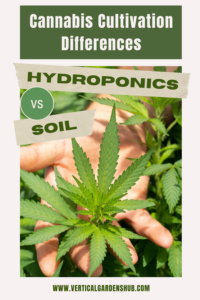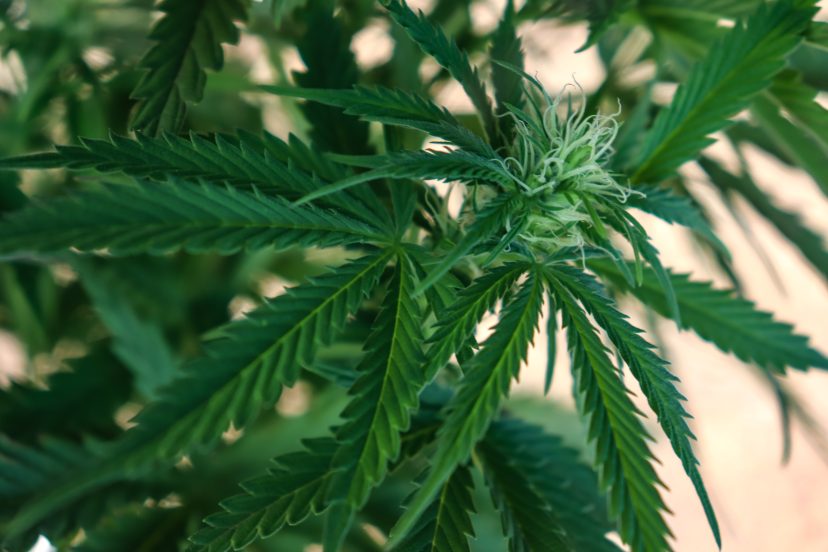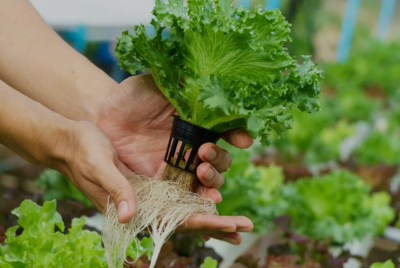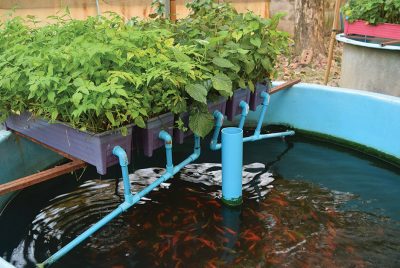Hydroponic vs Soil Weed Cultivation Differences
When it comes to cultivating weed, choosing the right method can significantly impact the quality and quantity of your yield. Two prominent methods in the realm of cannabis cultivation are hydroponic vs soil weed based approaches. Both have their merits, but unraveling the contrasts between hydroponic vs soil weed and navigating through their unique characteristics is key.
Let’s navigate through the unique characteristics of hydroponic vs soil weed methods and explore the factors that can influence your choice and align with your cultivation goals.
In this Article for Hydroponic vs Soil Weed
- Understanding Hydroponic Weed Cultivation
- Advantages of Hydroponic Weed
- Disadvantages of Hydroponic Weed
- Traditional Soil-Grown Weed Cultivation
- Benefits of Soil-Grown Weed
- Drawbacks of Soil-based Weed
Understanding Hydroponic Weed Cultivation
Understanding hydroponic weed involves recognizing that it’s a cultivation method where cannabis plants are grown without soil. Instead, they thrive in nutrient-rich water solutions, receiving essential nutrients directly at their roots. This method offers controlled conditions that promote efficient growth, water conservation, and reduce susceptibility to soil-borne pests and diseases.
Also Read:
Advantages of Hydroponic Weed
Growing hydroponic weed offers several advantages that make it an appealing option for cannabis cultivators. Here are some of the key benefits:
Faster Growth
Hydroponic systems deliver nutrients directly to the plant’s roots, allowing for faster growth rates compared to traditional soil cultivation. This can result in quicker harvests and increased yields.
Water Efficiency
Hydroponic systems are incredibly water-efficient. They use recirculating systems that allow plants to absorb only the water they need, minimizing waste.
Nutrient Control
With hydroponics, you have precise control over the nutrients your plants receive. This enables you to tailor the nutrient solution to each growth stage, ensuring optimal growth and maximum yield.
Space Optimization
Hydroponic systems are versatile and can be adapted to fit a variety of spaces, making them ideal for urban environments or areas with limited room for traditional gardening.
Higher Yields
Due to the controlled environment and efficient nutrient delivery, hydroponic systems often yield more cannabis compared to soil cultivation making it an attractive option for commercial growers.
Reduced Pest and Disease Risk
Since hydroponic systems don’t involve soil, they are less susceptible to soil-borne pests and diseases. This can result in healthier plants and reduced need for pesticides.
Year-Round Cultivation
Hydroponic systems can be set up indoors, allowing for year-round cultivation regardless of weather conditions.
Optimized Nutrient Absorption
Plants receive nutrients directly through water, leading to efficient absorption. This can result in healthier plants with fewer nutrient deficiencies.
Reduced Weeding
Hydroponic systems eliminate the need for weeding, as there is no soil for weeds to grow in. This saves time and effort during the cultivation process.
No Soil Erosion
Hydroponics eliminates this issue entirely, as there is no soil involved in the cultivation process.
Customized Environments
Hydroponic systems allow you to create a controlled environment with ideal conditions for cannabis growth. This includes regulating light, temperature, humidity, and CO2 levels.
Consistent Quality
With precise control over nutrients and environmental conditions, hydroponic systems can lead to more consistent and predictable cannabis quality in terms of flavor, aroma, and potency.
Sustainability
Hydroponic systems use fewer resources overall reducing waste and the environmental impact.
Vertical Growing
Hydroponic systems are well-suited for vertical growing setups, allowing you to maximize space and increase yield potential.
Educational Value
Hydroponic cultivation provides a valuable learning opportunity, teaching growers about plant biology, nutrient management, and the interplay between plants and their environment.
It’s important to recognize that while hydroponic systems offer many benefits, they also require a certain level of knowledge and investment. Proper understanding of nutrient management, pH levels, and system maintenance is crucial for successful hydroponic weed cultivation.
Disadvantages of Hydroponic Weed
Growing hydroponic weed offers many advantages, but like any cultivation method, it also has its drawbacks. Here are potential drawbacks of growing hydroponic weed:
Initial Investment
Setting up a hydroponic system can require a significant upfront investment in equipment costs like grow lights, pumps, reservoirs, nutrient solutions, pH meters, and monitoring systems. While this investment can lead to long-term savings in water and nutrients, it may still be a barrier for some growers.
Technical Knowledge
Hydroponic systems demand a certain level of technical understanding. Maintaining proper nutrient levels, pH balance, and water circulation requires monitoring and adjustments. Novice growers might find this learning curve challenging, leading to potential mistakes that could affect plant health.
System Malfunctions
Any mechanical or electrical components in a hydroponic system can potentially malfunction. If a pump fails, a sensor misreads data, or the power goes out, it could have detrimental effects on your plants if not addressed quickly.
Plant Vulnerability
Any imbalance can affect plants more rapidly, potentially leading to stunted growth or nutrient deficiencies.
Disease Spread
Because hydroponic systems recirculate water and nutrients, any pathogens or diseases that enter the system can spread quickly. Regular maintenance, sterilization, and strict hygiene practices are necessary to prevent disease outbreaks.
Resource Dependence
Hydroponic systems rely heavily on electricity for pumps, lights, and other equipment. If there’s a power outage or interruption, your plants’ growth could be compromised.
Continuous Monitoring
Hydroponic systems require consistent monitoring to ensure that nutrient levels, pH, and water circulation remain optimal.
Learning Curve
As with any new skill, there’s a learning curve associated with hydroponic growing. It takes time to understand the intricacies of the system, troubleshoot issues, and fine-tune the setup for optimal results.
Risk of Overfeeding
With precise control over nutrient delivery, there’s also a risk of overfeeding plants in a hydroponic system. Over-fertilization can lead to nutrient toxicity and hinder plant growth.
Environment Vulnerability
If you’re growing hydroponic weed in an environment prone to power outages, extreme temperature fluctuations, or water scarcity, your system might be more vulnerable compared to soil-based cultivation. Additionally, if you’re not using renewable energy sources, the carbon footprint of the system could be a concern.
It’s important to note that while these drawbacks exist, many of them can be mitigated with proper planning, education, and diligent care. As with any cultivation method, success with hydroponic weed growing comes with a combination of knowledge, experience, and a commitment to maintaining a healthy and well-balanced system.
Traditional Soil-Grown Weed Cultivation
Traditional soil-based weed cultivation refers to the practice of growing cannabis plants in natural soil as the primary growing medium. This method relies on the inherent properties of the soil to provide essential nutrients, water, and support to the plants. It’s a time-honored traditional approach that has been used for centuries in agriculture and gardening.
Benefits of Soil-Grown Weed
Growing soil-based weed, has several advantages that make it a popular choice for cannabis growers. Here key benefits:
Natural Flavor and Aroma
Soil-based cultivation often imparts unique and complex flavors and aromas to the cannabis plants. The minerals and nutrients present in the soil contribute to the plant’s terpene profile, resulting in a rich sensory experience.
Less Technical Knowledge Required
Soil-based cultivation is generally more intuitive for beginners. The natural processes of soil interaction and nutrient release are familiar and require less specialized knowledge.
Nutrient Storage
Soil acts as a reservoir for nutrients, allowing plants to access them over time. This buffering effect can help prevent nutrient imbalances and deficiencies.
Connection to Nature
Working with soil provides a connection to nature and the Earth. Growers find this connection fulfilling and enjoyable.
Environmental Sustainability
Soil cultivation contributes to soil health and the conservation of soil ecosystems. Proper soil management can improve soil structure, fertility, and water retention.
Reduced Equipment Costs
Soil cultivation generally requires fewer initial equipment costs compared to hydroponic systems. While there are still necessary tools, the setup can be simpler.
Less Frequent Monitoring
Soil-based systems don’t require constant monitoring of nutrient levels and pH. This can be beneficial for growers who have limited time for day-to-day maintenance.
Less Energy Consumption
Soil-based cultivation doesn’t rely on artificial lighting, pumps, and other energy-intensive equipment that hydroponic systems often require. This can lead to lower energy consumption.
Easier Transition to Organic Methods
For those interested in organic cultivation, soil-based systems offer a more straightforward path. Organic nutrients and amendments can be incorporated directly into the soil.
Diversity of Microorganisms
Healthy soil is home to a diverse community of beneficial microorganisms that contribute to nutrient cycling and plant health. These microorganisms can improve soil structure and suppress pathogens.
Resilience to Power Outages
Soil-based cultivation is less vulnerable to power outages and technical malfunctions that can impact hydroponic systems. Plants can still access nutrients in the soil during such incidents.
Suitability for Outdoor Growing
Soil-based cultivation is well-suited for outdoor growing environments. Cannabis plants can interact with the natural environment, including sunlight and natural elements.
It’s important to consider both the advantages and disadvantages of soil-based cultivation when choosing the best method for your cannabis growing endeavors. Each approach has its merits, and the choice ultimately depends on your goals, resources, and level of experience.
Drawbacks of Soil-based Weed
Growing soil-based weed while a traditional and widely practiced method, does come with its own set of disadvantages. Here are a few potential drawbacks:
Slower Growth
Compared to hydroponic systems, soil-based cultivation often results in slower growth rates. This is because plants rely on the natural breakdown of organic matter in the soil to release nutrients, which can be a slower process than direct nutrient delivery in hydroponics.
Resource Intensive
Soil-based cultivation requires more water and nutrients compared to hydroponics. The need for larger quantities of water and fertilizers can contribute to increased resource usage.
Nutrient Inconsistency
Soil quality can vary significantly, leading to inconsistent nutrient availability for plants. This can result in nutrient deficiencies or imbalances, affecting plant health and yield.
Limited Control
With soil-based cultivation, growers have less control over nutrient delivery and pH levels. This can make it challenging to fine-tune the growing environment for optimal plant growth.
Pest and Disease Risk
Soil-based cultivation exposes plants to a higher risk of soil-borne pests and diseases. Pathogens can easily spread through the soil and affect plant health.
Weed Competition
Soil cultivation requires ongoing weeding to prevent weeds from competing with cannabis plants for nutrients and resources. This can be time-consuming and labor-intensive.
Space Requirement
Traditional soil cultivation methods often require more space than hydroponic systems. This can be a limiting factor for urban or indoor growers with limited space.
Environmental Impact
Conventional soil-based agriculture can contribute to soil erosion and nutrient runoff, which can negatively impact local ecosystems and water bodies.
Inconsistent Flavor
While soil can contribute to unique flavors and aromas in the cannabis plant, it can also lead to inconsistencies in flavor and potency. Soil composition and quality can vary, affecting the final product.
pH Imbalances
Soil pH can fluctuate naturally, affecting nutrient availability to plants. Monitoring and adjusting soil pH can be challenging and time-consuming.
Limited Growing Seasons
Soil cultivation is often limited to specific growing seasons, especially in regions with harsh climates.
Root Disease Risk
Soil-borne pathogens can cause root diseases in cannabis plants, leading to stunted growth, reduced yield, and even plant death.
Environmental Sensitivity
Outdoor soil cultivation is more susceptible to environmental factors like weather conditions, pests, and diseases. Unpredictable events can impact crop health and yield.
Labor Intensity
Soil-based cultivation requires more manual labor, including soil preparation, weeding, and pest management. This can be demanding for larger-scale operations.
Land Quality
Soil quality varies from location to location. Poor-quality soil may not provide adequate nutrients for healthy plant growth, thus additional fertilization may be needed.
It’s important to note that many of these disadvantages can be mitigated through proper soil management practices, such as improving soil quality through composting, using cover crops, and practicing integrated pest management. Soil-based cultivation can still yield high-quality cannabis, especially when growers have a deep understanding of soil health and plant needs.
Final Thoughts – Choosing between Hydroponic vs Soil Weed
The choice between Hydroponic vs Soil Weed depends on your preferences, resources, and the outcomes you’re seeking. Hydroponic systems offer efficient growth and sustainability, while traditional soil cultivation provides a connection to nature’s processes. Evaluate your goals and resources to make an informed decision that aligns with your vision.

FAQs
Q: Which method yields faster growth?
Hydroponic systems generally lead to faster growth due to the direct nutrient delivery to plants’ roots.
Q: Can hydroponic weed be as flavorful as soil-grown weed?
While hydroponic systems prioritize efficiency, soil-grown weed often boasts more distinctive and natural flavors due to the interaction with the soil’s microbial life.
Q: Are hydroponic systems harder to set up?
Hydroponic systems require a learning curve, but with the right resources and information, they can be set up effectively for successful cultivation.
Q: Is hydroponic cultivation more environmentally friendly?
Yes, hydroponic systems are generally more water-efficient and use fewer resources compared to traditional soil cultivation.
Q: Can I switch from one method to the other mid-crop?
Switching cultivation methods mid-crop can be challenging due to the different growth conditions required by each method. It’s usually recommended to start a new crop with the chosen method.





